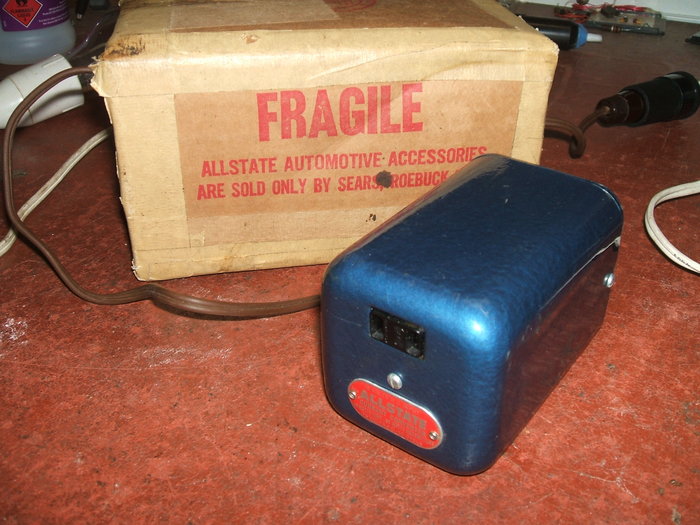

This inverter provides 110V 60c/s at 40W continuous, 50W intermittent. "All State" appears to be a brand of the large Sears organisation in the U.S. However, the inverter is obviously made by Terado. The construction bears more than a striking resemblance to this Terado model.
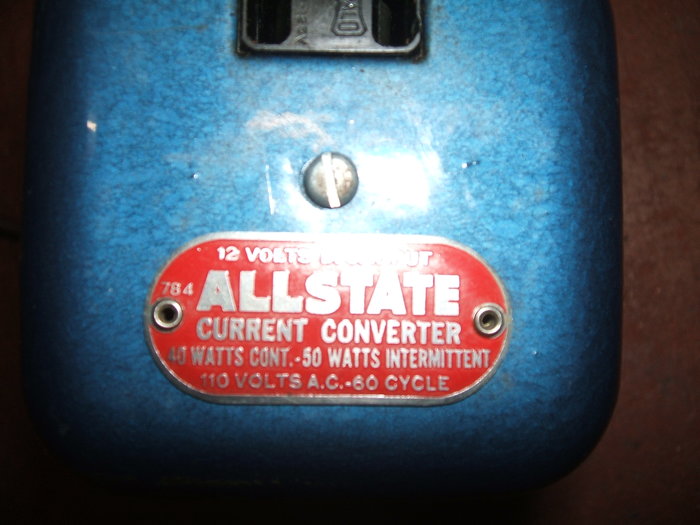
A set of instructions conveniently came with the inverter, and as the first picture shows, it came in the original box. The inverter had been used in the original box as a hole had been put in the end for the 12V cable to pass through. As a result, the inverter was in perfect cosmetic condition.
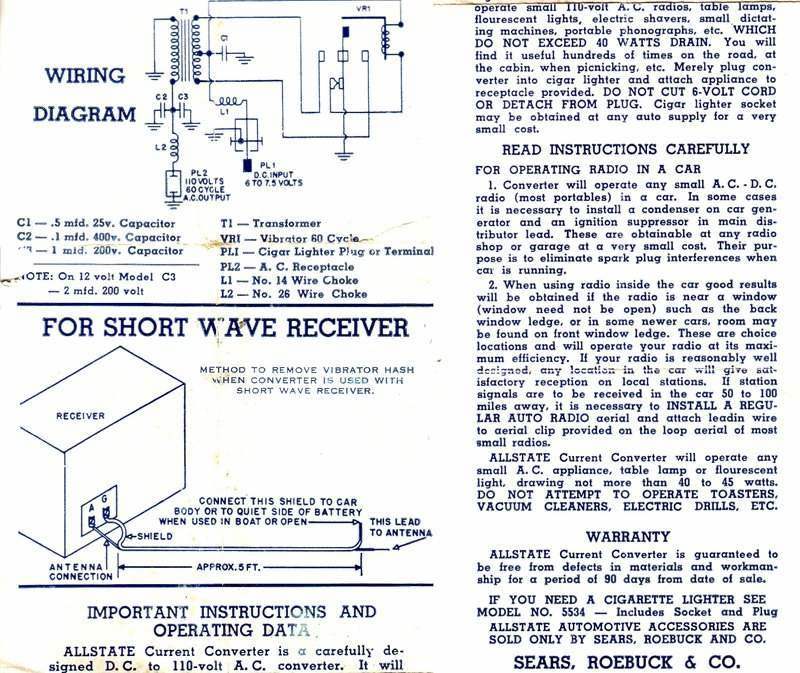
The circuit is completely standard. As
this is the 12V model, the buffer capacitance is 2uF. This consists of
two 1uF condensers in parallel. There's also a .1uF mica which presumably
is used for RF filtering. C2 and L2 thus follow the design of the Terado
Trav-Electric mentioned earlier. However, here all the buffer capacitance
is on the secondary.
The input circuit is the same, using L1
and C1 for input RF filtering. Again, no fuse is provided - relying on
that which may be included in the car's electrical system.
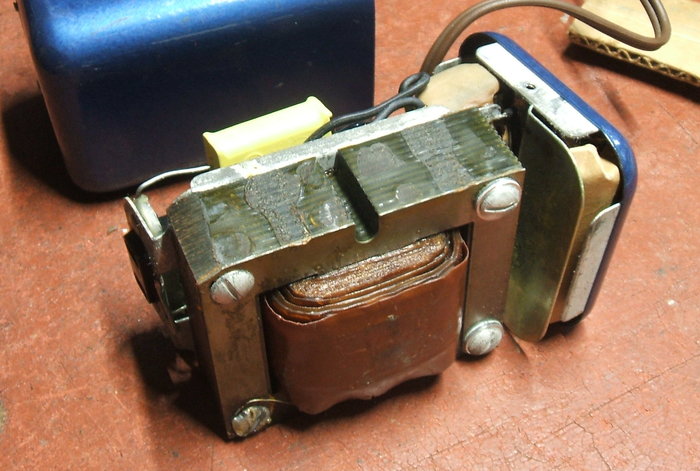
The top of the chassis is all transformer.
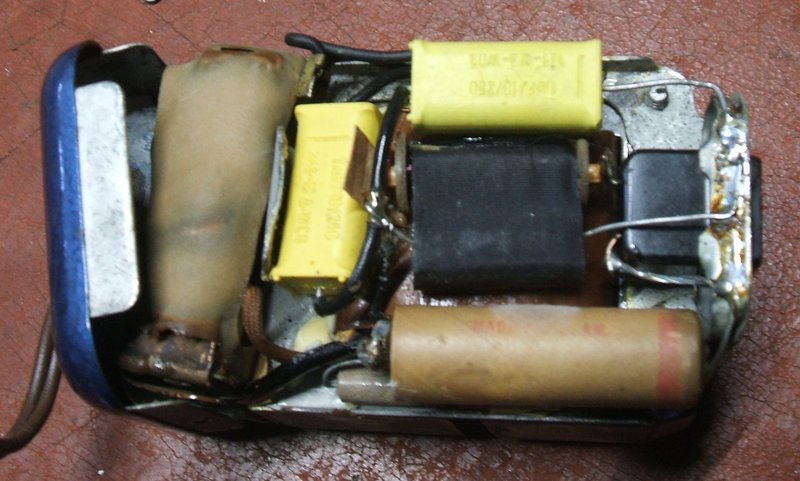
Under the chassis we see all the other components. The two yellow
condensers are the new 1uF buffers. The .5uF paper condenser is original.
Any leakage it may have is harmless. The 22R 2W driving coil dropping resistor
is just visible under the .5uF paper condenser.
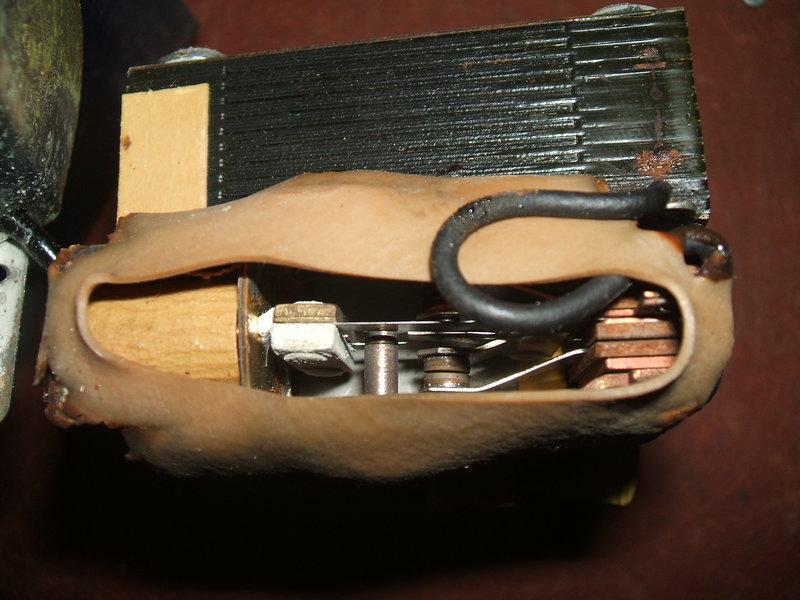
Close up of vibrator contacts shows them to be in as new condition.
The vibrator is a series driven Oak type, V6544. Its contacts are in perfect condition. Like the other compact Terado inverters, the vibrator is open except for a rubber cover and is wired directly into the circuit. Being a series driven Oak type, replacement is not likely to be needed. Not shown on the circuit diagram is the 22 ohm driving coil dropper resistor for the 12V version. The V6544 is a 6V vibrator and requires this resistor for 12V use.
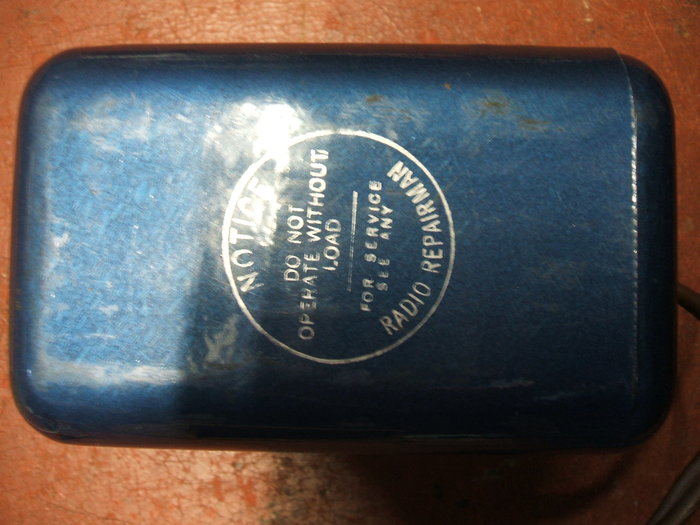
As correct buffer capacitance is dependent on load, the warning
is given here not to run the inverter unloaded.
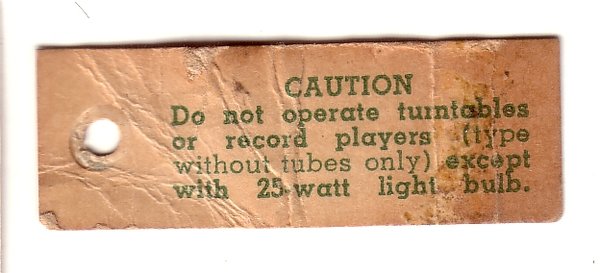
A hint at the need to correct power factor
for inductive load is given here. This note was screwed underneath the
outlet. While a resitive load swamp out inductance will work to a degree,
a capacitor is better. However, the average user would be mystified by
such things, and how to choose the correct value.
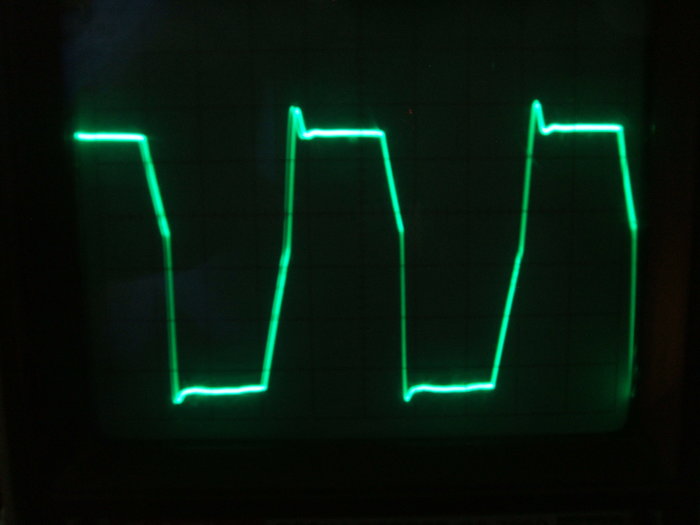
The output waveform is excellent. The vibrator
worked straight away and did not need any contact cleaning. For a while
I had been using this inverter to power the Gilfillan
68F. Provided the 12V supply was earthed, there was no interference
problem.
I found no variation in vibrator sparking
with the inverter either fully loaded or not loaded at all. In both cases
it was non existent or barely noticeable.